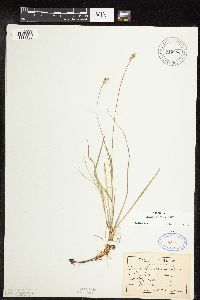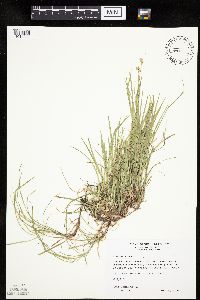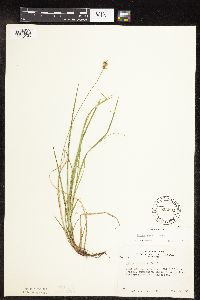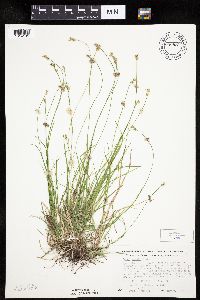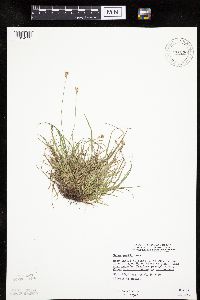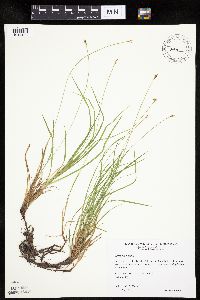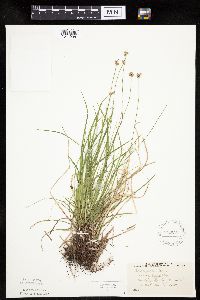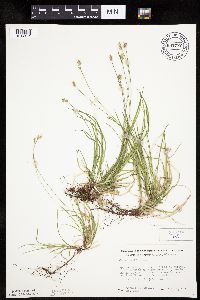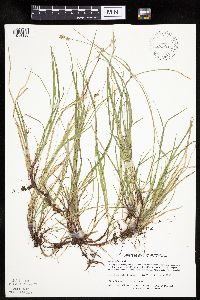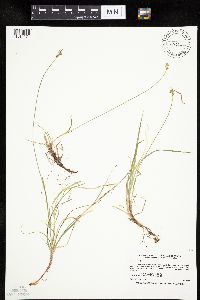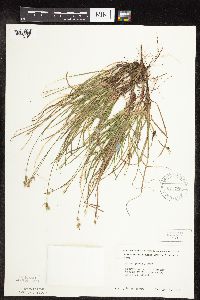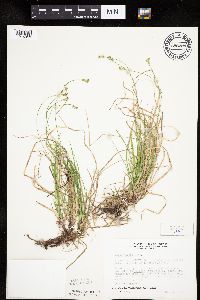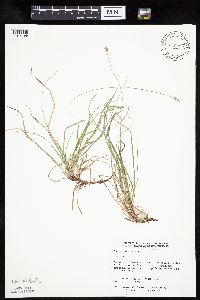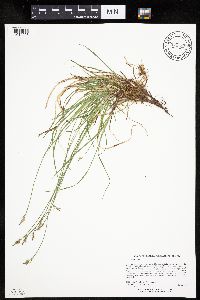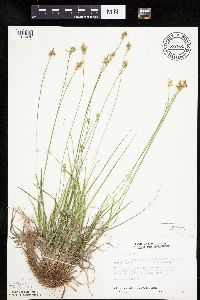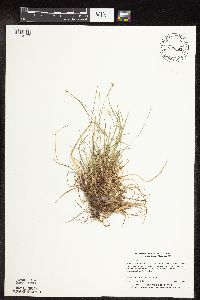Carex peckii
|
|
|
|
Family: Cyperaceae
Peck's Sedge
[Carex clivicola Fernald & Weath.] |
Plants loosely cespitose; rhizomes ascending, reddish brown, 0-15(-30) mm, slender. Culms 21-47 cm, smooth to weakly scabrous distally; bases not fibrous. Leaf blades pale green, shorter than culms, 1-3.3 mm wide, herbaceous, papillose abaxially, scabrous adaxially. Inflorescences with both staminate and pistillate spikes; peduncles of staminate spikes 0.4-2.2 mm; proximal cauline bracts leaflike usually shorter than inflorescences. Spikes: proximal pistillate spikes 2-3 (basal spikes 0); cauline spikes with proximal 2 spikes overlapping, se!parated by less than 7 mm, with 3-10 perigynia; staminate spikes 5.3-8.6 × 0.8-1.7 mm. Scales: pistillate scales reddish brown to pale brown, with broad white margins, ovate, 2.2-3.2 × 1.2-1.8 mm, 1/2 to 2/3 length of perigynia, apex acute to acuminate,; staminate scales elliptic, 2.4-3.2 × 0.9-1.8 mm, apex acute. Anthers 1.4-1.5 mm. Perigynia light green, veinless, ellipsoid, 3.2-4.2 × 1.1-1.3 mm, longer than wide; beak straight, pale green, 0.7-1 mm, ciliate-serrulate, apical teeth 0.2-0.4 mm. Stigmas 3. Achenes brown, obovoid to ellipsoid, obtusely trigonous in cross section, 1.9-2.4 × 1-1.3 mm. 2n = 36. Fruiting mid May-mid Jul. Mainly calcareous soils on dry to mesic slopes, in partial shade in rich, deciduous or mixed deciduous-coniferous, open woods, bases of slopes, or full sun on exposed outcrops; 10-2000 m; Alta., B.C., Man., N.B., N.S., Ont., Que., Sask.; Alaska, Iowa, Maine, Mass., Mich., Minn., Nebr., N.H., N.Y., N.Dak., S.Dak., Vt., Wis., Wyo. Hybrids between Carex peckii and other members of the section have not been confirmed; occasional plants appear to combine its characteristics with those of other species, such as C. tonsa.
Loosely cespitose; stems slender but erect, 2-6 dm, ±strongly surpassing the lvs; main lvs 1-1.5 mm wide; infl longer or shorter than the lowest bract, 1-2 cm, with a small terminal staminate spike and 2 or 3 ±closely aggregated pistillate ones; pistillate scales reddish-brown with broad hyaline margins and pale center, wider but evidently shorter than the perigynia, blunt or rounded, sometimes shortly mucronate; perigynia 3-12, dull green or yellowish-green, short-hairy, 2.7-4.1 mm, slightly flattened, narrowly obovoid above a stipe-like base, 2-keeled, abruptly contracted into a slender beak 0.5 mm; achene rounded-trigonous; 2n=36. Open woods, ±calciphile; Que. to Yukon, s. to N.J., Mich., Minn., Nebr., and B.C. (C. nigromarginata var. elliptica; C. albicans, misapplied) Gleason, Henry A. & Cronquist, Arthur J. 1991. Manual of vascular plants of northeastern United States and adjacent Canada. lxxv + 910 pp. ©The New York Botanical Garden. All rights reserved. Used by permission. |



















